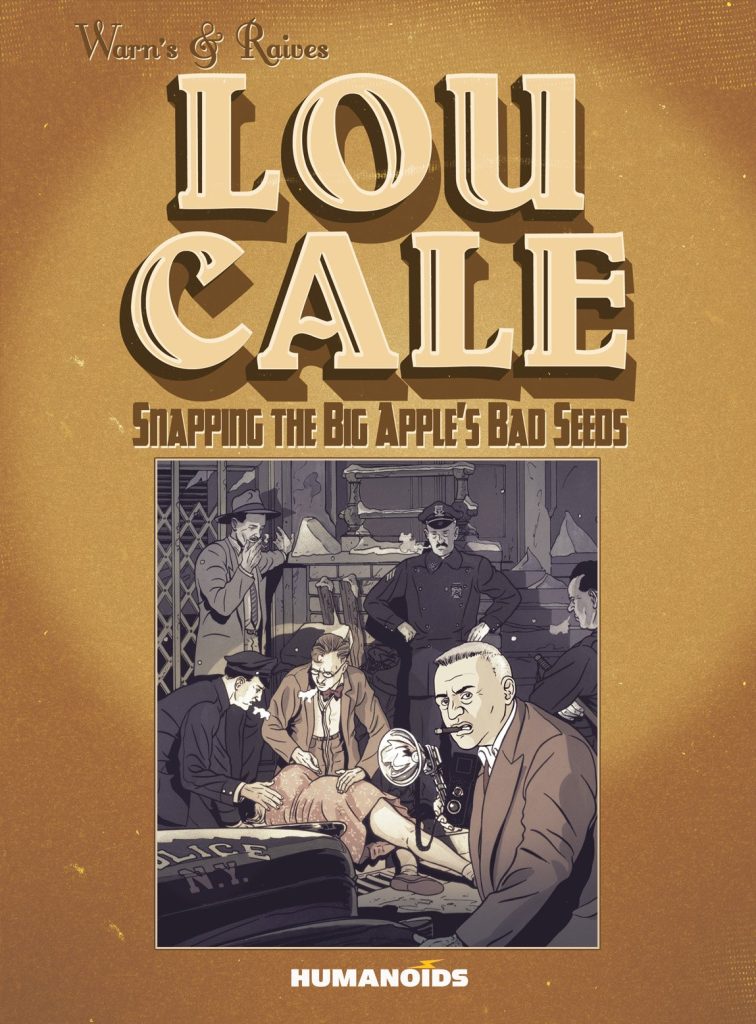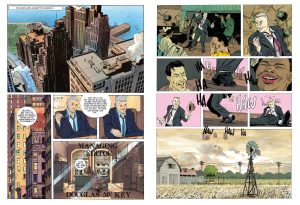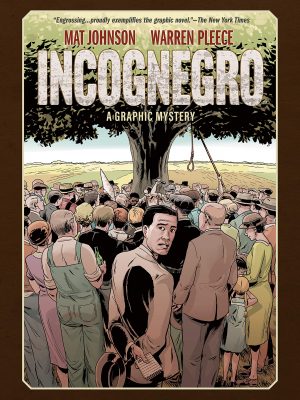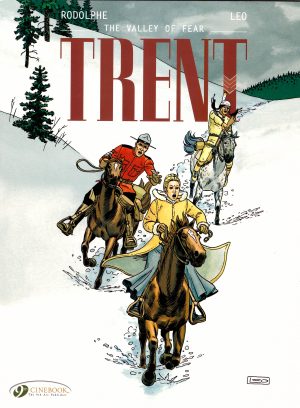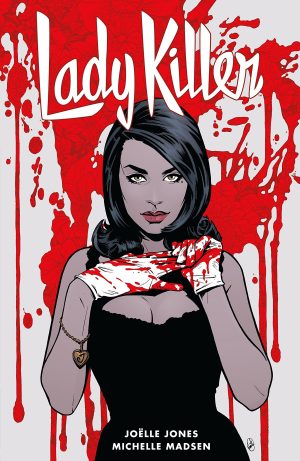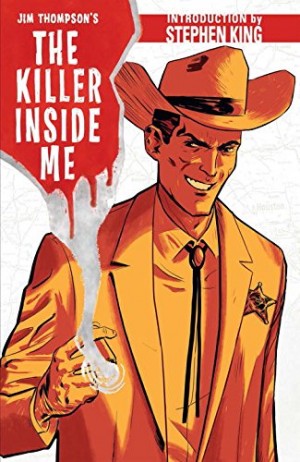Review by Frank Plowright
On the face of it, it’s strange that Humanoids would in 2015 translate and compile the five volumes of a series published in France between 1987 and 1992, but just a glance at the art shows why you should be interested. Lou Cale recreates a magnificent and alluring 1940s New York by day and night. Individual panels can look static until the realisation drops that the panels initially at least, evoke Lou Cale’s photographic trade by providing snapshots.
Cale is based on genuine 1940s photographer Arthur Fellig, better known by his alias Weegee, who was compulsively drawn to the seediest areas of New York and to documenting a now long gone era. Just as Weegee also circulated at higher levels of society, Cale’s world is also one of celebrities, yet he’s also someone able to ingratiate himself with all people, the snobberies and prejudices of the 1940s absent in Lou. It’s a useful personality as the feature has all the seductive detail of the era, but openly addresses the period’s troublesome aspects. Where Lou differs from Weegee is by being hooked on a story to the point where he’s prompted to carry out his own investigations. These concern why a woman seemingly committed suicide, why a corpse was scalped, the intrigues of a murdered friend, the causes of an Arkansas lynching, and mysterious tattoos on two headless corpses.
Both Belgian creators use pseudonyms, Warn’s being Eric Warnauts and Raives being Guy Servais. Unusually theirs is a deeper collaboration than most, with both working not only on the plots, but also the art. The scene-setting locations are stunning, obsessively detailed and each picture postcard perfect. The same standards apply to internal scenes, providing homes that look as if people live in them and workspaces where people actually work. However, the artists are far more at home with architecture than people who are frequently slightly misproportioned when seen from distance, with heads too large for their bodies or at a distracting angle, and there are some problems keeping people looking consistent. Cale himself is suitably homely, which makes him distinctive, and a nice aspect is how his personality is charming enough to overcome his plain face and being short.
The first story is Warn’s and Raives feeling their way into the series, yet establishes the premise well, and the final outing is strangely tired and formulaic, but the three middle stories are gems. While other content is admirably diverse, these concentrate on broader social issues. One features Native Americans, another Asian immigrants, and the strongest has Cale sent to produce a feature on an Akansas town where there’s just been a lynching. A strength is the convincing motivation of supporting characters, although the most regular in that role, a compliant police lieutenant, is merely a sounding board.
An attractive hardcover production and a brief interview with Servais round off an appealing package for anyone who enjoys a strong crime drama.
